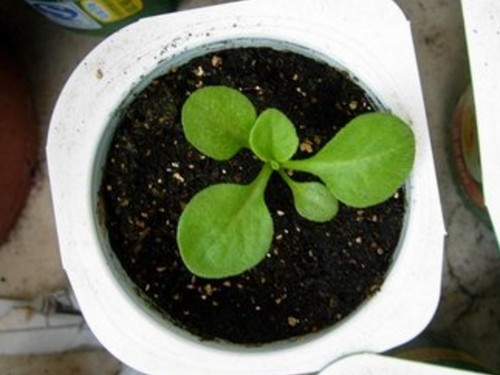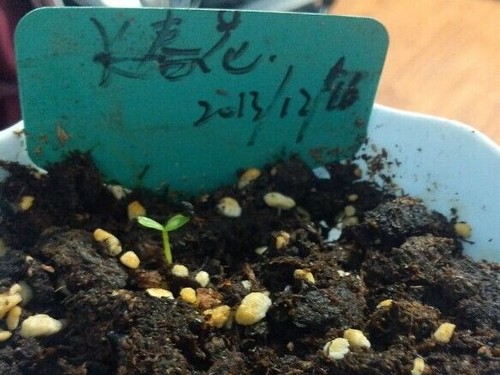Propagation methods of Catharanthus roseus
Catharanthus roseus has a long flowering period, beautiful colors and beautiful posture, and the varieties cultivated in recent years are getting bigger and bigger, so it is very suitable to be a bonsai ornamental plant, which has an unexpected effect in home layout.

Catharanthus roseus prefers warm, sunny and moist, fertile sandy loam. In the hot summer, should not be exposed to strong light, should be watered frequently, keep the basin soil moist, do not dry and hot, if you can give a little shade to promote its flowering, florescence from June to October.
Propagation, sowing or cutting can be done. The seeds were sowed in the open bed at the beginning of April, or sowed in the greenhouse in advance from January to February, and the germination temperature was about 20 ℃. After germination, they were divided into small pots when there were 4 or 6 true leaves, and then the corresponding large pots were replaced as the seedlings grew. Cultivated in the open field and planted in flower beds after separate planting. Catharanthus roseus can also be cut during the growth period, but cutting seedlings are not as strong as sowing seedlings, so they are used less.
Catharanthus roseus is often propagated by sowing. However, the mature fruit of Catharanthus roseus can crack and scatter seeds on its own, so it should be observed that when the fruit turns yellow, it should be picked in time, otherwise it is difficult to pick seeds. Here are three propagation methods of Catharanthus roseus.
1. Sowing and reproduction
Catharanthus roseus is often sown and propagated, and it is generally sown around April in early spring. Catharanthus roseus has 750 seeds per gram, and the optimum temperature for germination is 18-24 ℃. The mixed soil of rotten leaf soil, culture soil and fine sand was disinfected by sowing Pansheng, and germinated 14-21 days after sowing. After emergence, shade should be added for 2-3 hours at noon when the light is strong and the temperature is high. When the seedling is 5 cm tall, it can be potted when it has 3 pairs of true leaves, and when it has 6-8 pairs of true leaves, it can be planted. In May, the flower beds are watered every 3-5 days, and the flowers will be leafy if they are properly topdressing with phosphorus and potassium fertilizer.
2. Cuttage propagation
Cut the shoots on the overwintering old plant in spring or early summer, with a length of 8 cm and 10 cm, with some leaves, cut off the lower leaves, leave the top 2-3 pairs of leaves, insert them into the sand bed or rotten leaf soil, keep the soil slightly moist, room temperature 20-24 ℃, pay attention to shade and maintain humidity, rooting 15-20 days after insertion, when the seedling is 10 cm high, top to promote hair, then on the three-inch basin, gradually turn to seven-inch basin.
3. Tissue culture propagation
The stem tip was used as explant. The sterilized shoot tips were cut into several segments, each 0.4-0.6cm, and inoculated in MS medium supplemented with 5 mg / L 6-benzylaminoadenine and 0.2mg / L naphthoacetic acid. After one month of culture, adventitious buds grew. Then transferred to 1/2MS medium supplemented with kinetin 0.2mg / L and indole acetic acid 2mg / L, white roots began to grow after half a month and became complete plants.
Catharanthus roseus is suitable for potted plants and ornamental plants. Its bright colors and longer flowering period have advantages, so it is one of the popular flower varieties. Those who like Catharanthus roseus should collect its breeding methods.
Time: 2019-06-11 Click:
- Prev

Methods of sowing and raising seedlings of potted daisies
Daisies are gradually loved by flower growers, and potted indoors. In order to grow daisies with beautiful colors, the way to sow daisies is extremely important, so how to sow daisies and raise seedlings? Sowing of potted daisies: the seeds of daisies are very small, 4900-6600 per gram.
- Next

Sowing and propagation techniques of potted Catharanthus roseus
Catharanthus roseus has 750 seeds per gram, and the optimum temperature for germination is 18-24 ℃. It can be sowed in spring in April, and the mixed soil of rotten leaf soil, culture soil and fine sand can be disinfected by sowing Pansheng, and germinate 14-21 days after sowing. After emergence, at noon when the light is strong and the temperature is high, shade should be added for 2-3 hours. Waiting for seedlings to be 5 cm tall
Related
- Fuxing push coffee new agricultural production and marketing class: lack of small-scale processing plants
- Jujube rice field leisure farm deep ploughing Yilan for five years to create a space for organic food and play
- Nongyu Farm-A trial of organic papaya for brave women with advanced technology
- Four points for attention in the prevention and control of diseases and insect pests of edible fungi
- How to add nutrient solution to Edible Fungi
- Is there any good way to control edible fungus mites?
- Open Inoculation Technology of Edible Fungi
- Is there any clever way to use fertilizer for edible fungus in winter?
- What agents are used to kill the pathogens of edible fungi in the mushroom shed?
- Rapid drying of Edible Fungi

